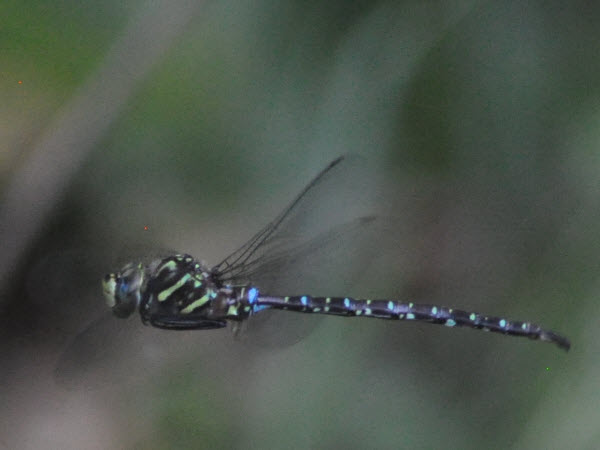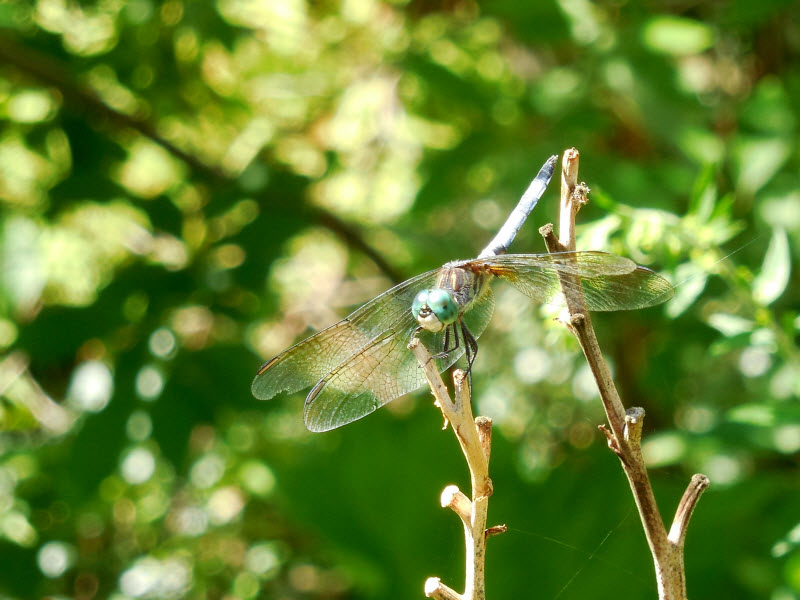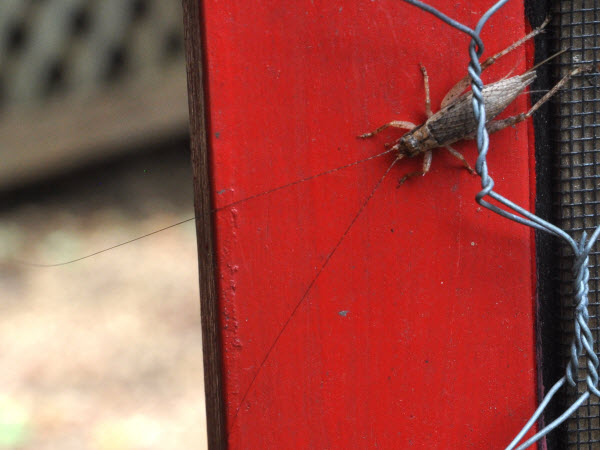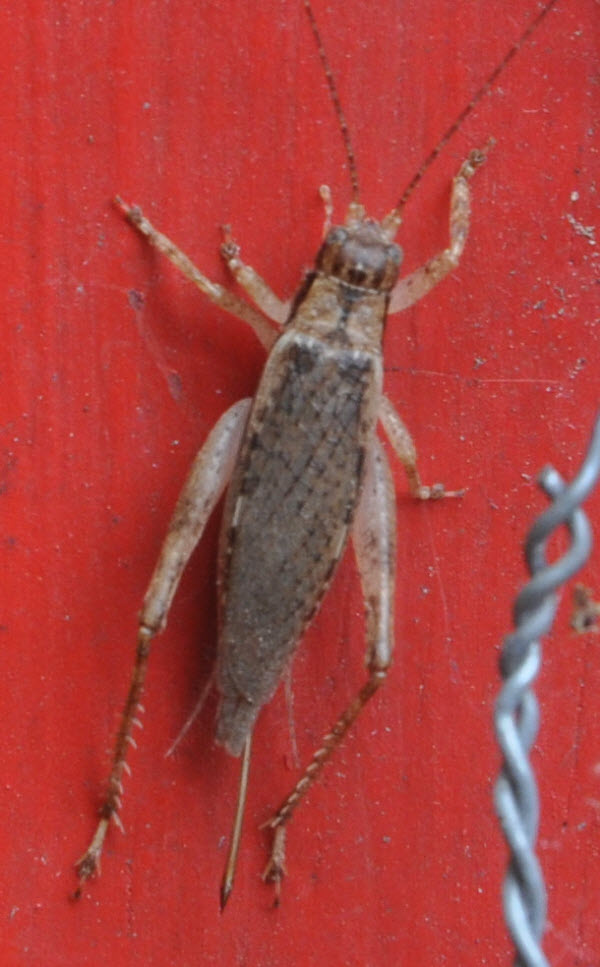Bugs
Whirligig beetles
ref: http://texasinsects.tamu.edu/bimg134.html">http://texasinsects.tamu.edu/bimg134.html
I saw these bugs in a stream - assumed they were just the skaters that I am used to seeing, but then realized not. searching the Internet I had trouble finding their identity.
I also found the same beetles in a wading pool we keep in our back yard. At end of summer we actually transferred the beetles to our water garden, and so the second picture, below.
But the picture is interesting to me because it shows off their eyes. The description in the link, above, reads:
Whirligig beetles are black, or nearly black, and 1/8 to 1-3/8 inches (3 to 35 mm) long. They are flattened dorsoventrally and streamlined for aquatic life. The eyes are divided allowing them to see both above and below the water surface where they are usually found. The forelegs are relatively long and often held forward. They are easily recognized by the erratic swimming behavior on the surface of the water. Larvae are elongate and often have sideways (lateral) extensions on the abdomen, up to 1 inch long and have four terminal hooks of the very tip of the abdomen.
The vertically elongated eye can be seen in the second picture, and in the first picture, with a little imagination, one can see how the beetles are submerged in the water at a level that their eyes are both above and below the water.
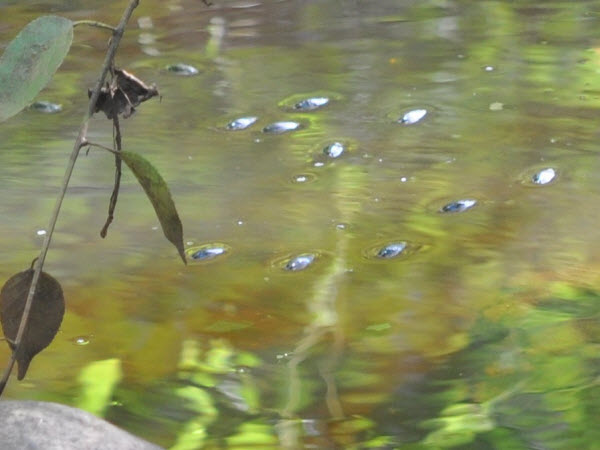
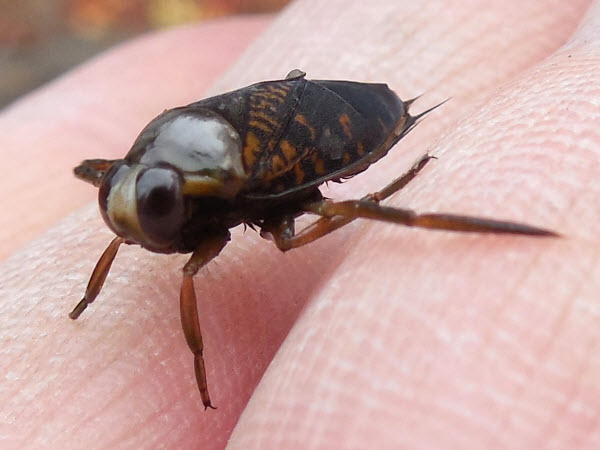
Flat-backed Millipede
(Sigmoria trimaculata)
Aside from the striking coloration and size of this millipede, I took note of its ability to spit a distance of 2 - 3 feet a substance containing cyanide and able to blind chickens and dogs, cause discomfort to humans. ref: www.whatsThatBug.com
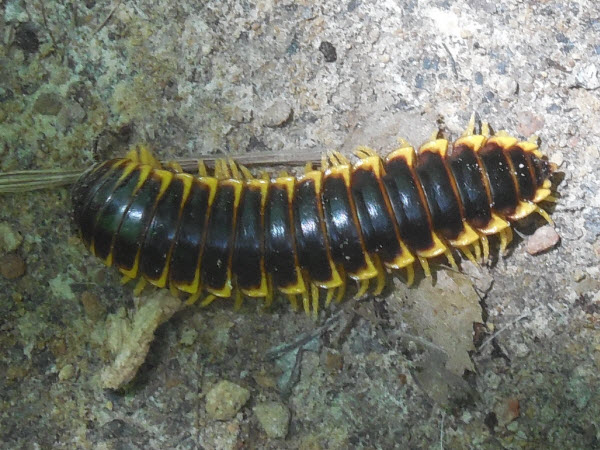
Monarch Butterflies
These were taken in Monterey and also just North in Santa Cruz, CA in the winter of 2013 - overnighting on a Eucalyptus tree.
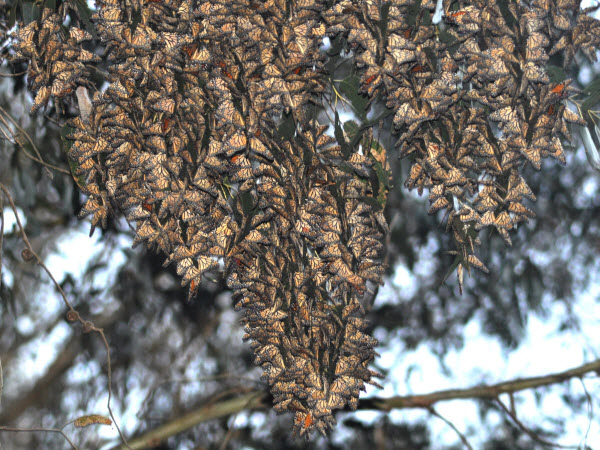
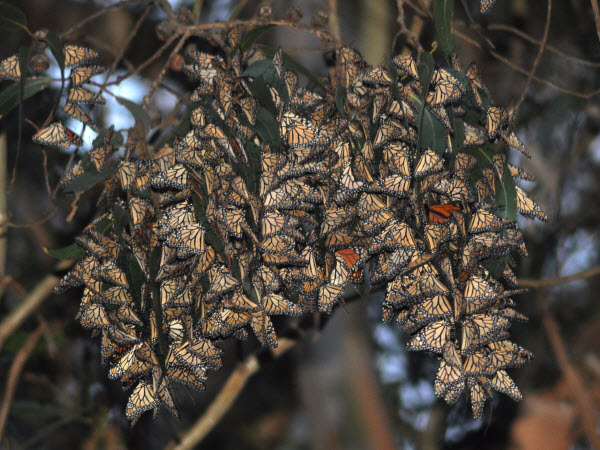

An interpreter at the Monarch Grove Butterfly Sanctuary told us that there can be on the order of 10,000 butterflies in one cluster. These pictures were taken either early in the morning or evening, while the butterflies were asleep for the night. The wings of most butterflies are closed, and so relatively little color shows. There are a few butterflies whose wings are open, and the red color is apparent.

Luna Moth Cocoon
My wife found this in with the fall leaves (November) - 1.5 inches in length - what a mystery for us! We guessed a cocoon - but so big! On a whim I searched on Luna moth, and that was clearly it. I have seen two Luna Moths in my life - a rare event for me. Of course, not knowing what this was, I had to open it - a knife would not do the trick - very tough and fibrous material, and so scissors.
Two links that I like: https://www.youtube.com/watch?v=atOSro3_W7c "Luna Moth Life Cycle" - I thought nicely done, and http://www.fcps.edu/islandcreekes/ecology/luna_moth.htm.
A few points that I took from these references:
- Luna Moths have a wingspan of up to 4.5 inches
- The moths fly only at night in spring and early summer
- The female lays eggs at the bottom of Black Walnut trees - apparently one of a few favorites - about 200 eggs in small groups. The eggs take about 10 days to hatch.
- The caterpillars will molt five times over 3 - 4 weeks, growing to 2.5 inches long.
- The caterpillar then spins silk and wraps itself in a leaf.
It stays in the cocoon for 2 - 3 weeks, or will winter in the cocoon. - The adult lives about a week - long enough to mate and lay eggs. In fact, the moth has no mouth, and does not eat!
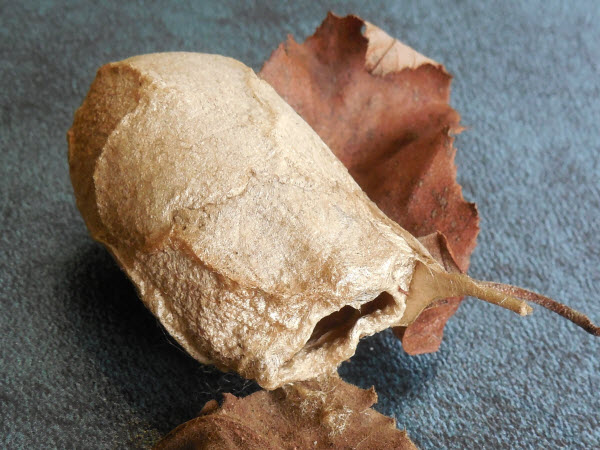
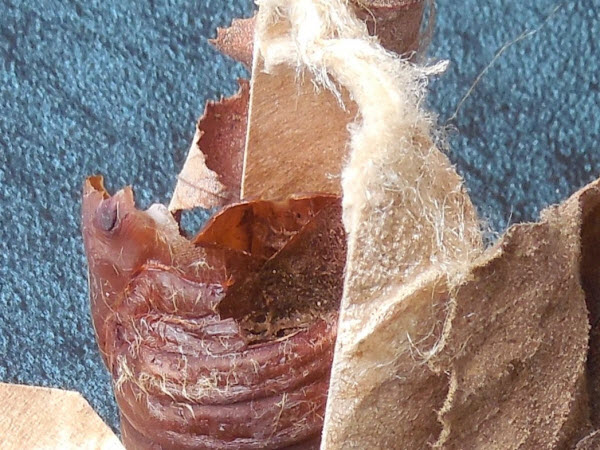
A cell phone photo of a Luna moth taken by my wife.
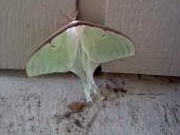
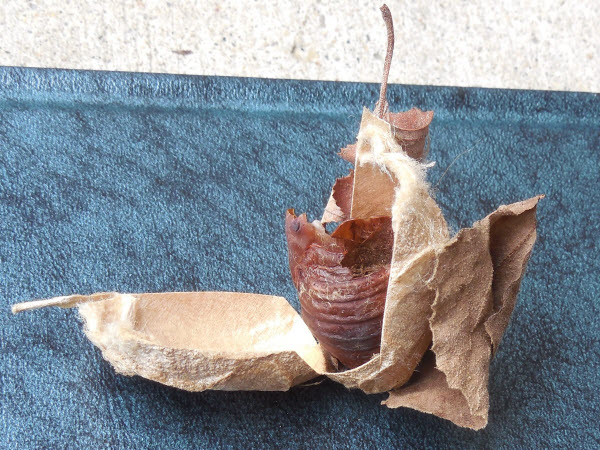
The references say that the cocoon is made of silk, into which the caterpillar weaves leaves. That accounts for the fibrous and very tough material. The image below is a full resolution portion of the previous image - I presume the strands are silk. I guess I would have thought that a silk thread would be finer than these - but this image is magnified - the cocoon is about 1 inch diameter by 2 inches lenght, and on my screen I measure over 2 inches diameter, so 2X magnification.
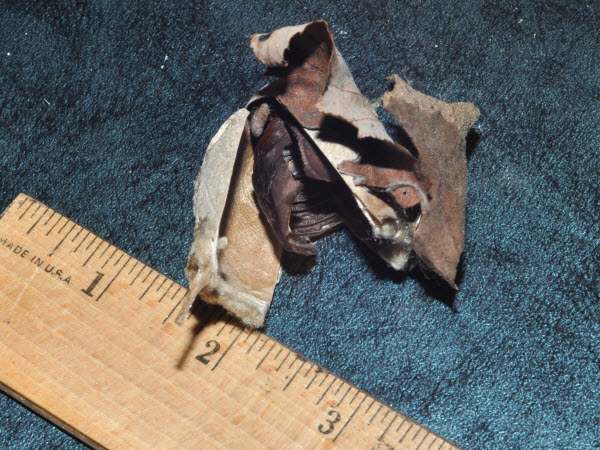
Eastern Tent Caterpillar.
Reference: http://www2.ca.uky.edu/entomology/entfacts/ef423.asp
The Eastern Tent Caterpillar overwinters as an egg, within an egg mass of typically 150 to 400 eggs. In spring the caterpillars hatch about the time the buds begin to open. Caterpillars from one egg mass stay together and spin a silken tent in a crotch of a tree. This is different from the fall webworm, which constructs its next over the end of a branch rather than at tree crotches.

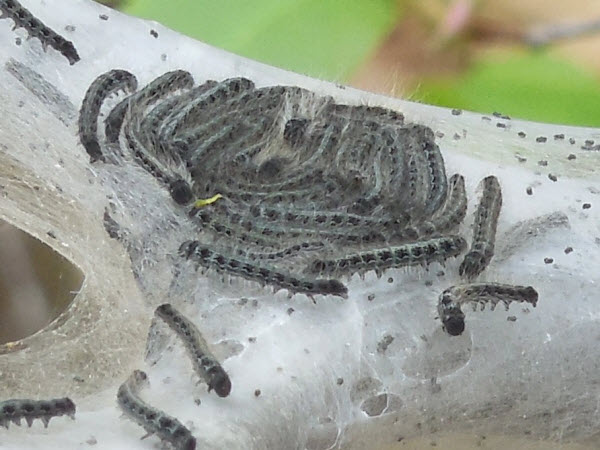

Squash Bugs
I was not so happy to see these bugs in large quantity on my squash plants late in the summer. This following a very productive summer - the plants grew very well, squash exceeded our eating rate, foliage was in good health. And then, late August, I find leaves covered with these bugs! But, the more I have read, the more it seems this is a manageable problem - clean out the garden of all plant material this fall, so as to limit opportunity of the adults to hunker down for the winter, and remove the nymphs and eggs as they appear in the early summer, and the squash should be fine.
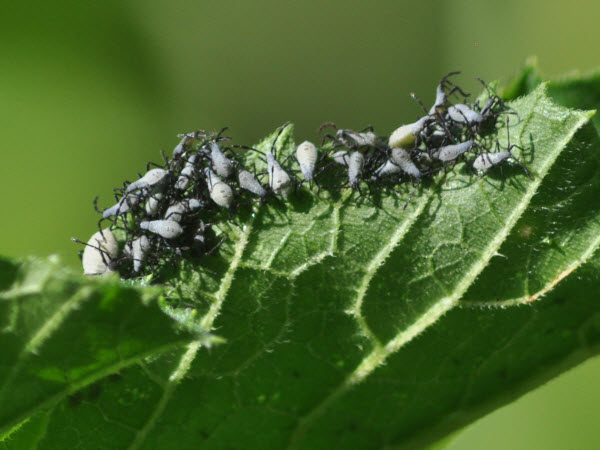
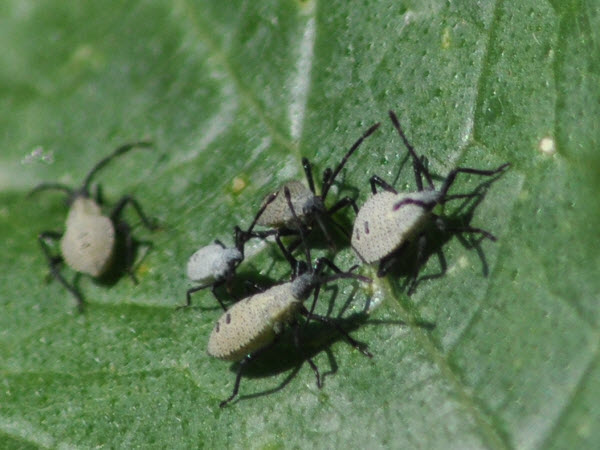
I would say that the squash bugs in these photos are in the nymph stage, although the one to the right, just above, looks to be maturing to an adult.

Winter Moth
The winter moth has become a real presence at our home in December, covering the outside house wall even with the outside temperature well below freezing. These come from those smooth green inch worms in the spring that hang from strands of silk thread and are carried by the breeze. And the worms that eat all of the tree buds and leaves to the point of defoliating the trees. They then migrate into the soil to pupate, and emerge as moths in early winter. Only the male is able to fly. The female climbs to the base of a tree or building and attracts the male (pheromone), and then lays clusters of about 150 eggs under tree bark or in tree crevices.
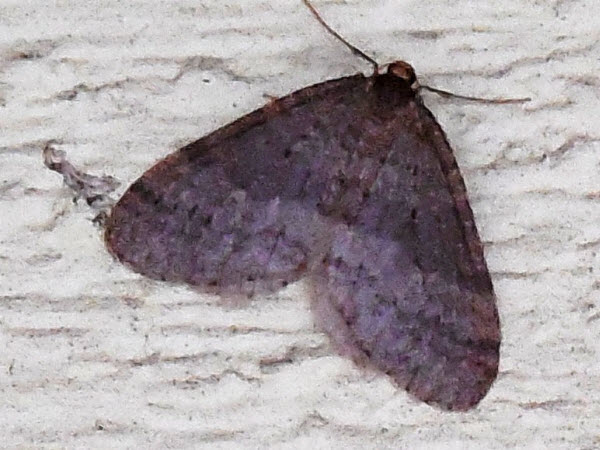

Butterfly
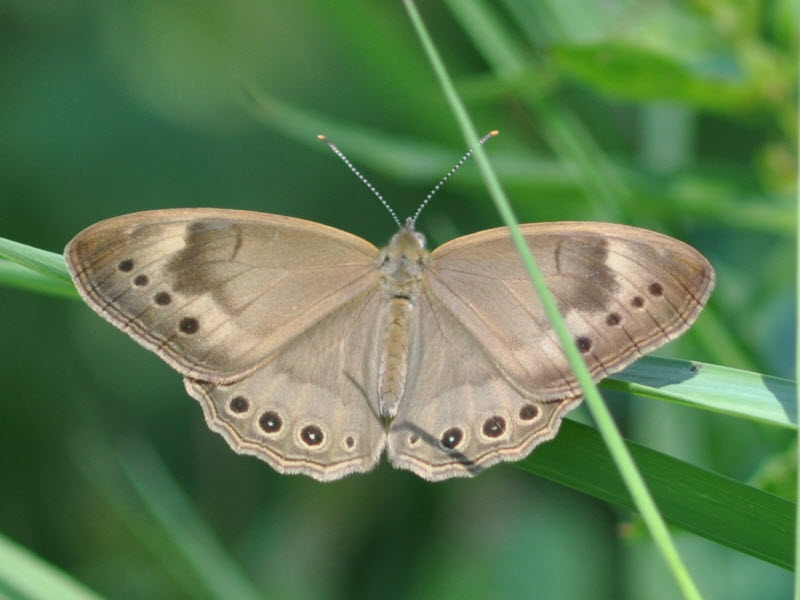
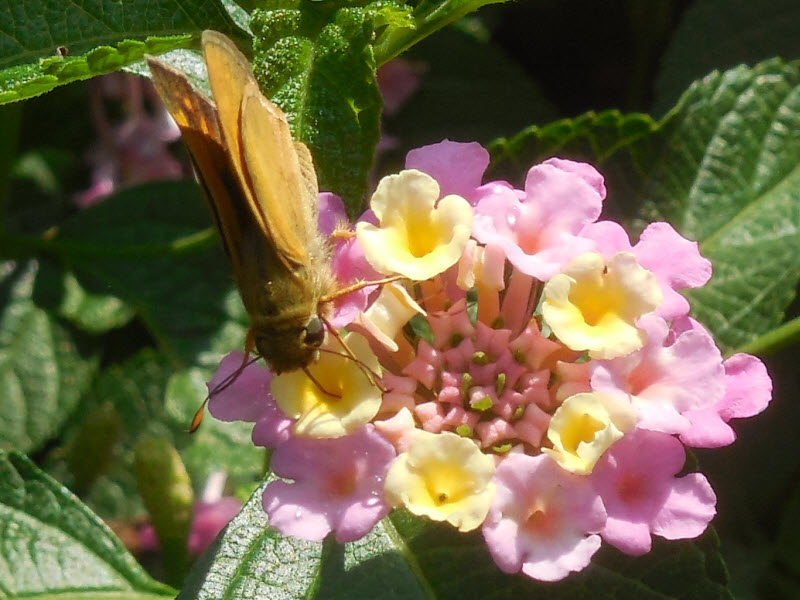
A butterfly with proboscis extended, on the flower of a Korean Spice Viburnum.
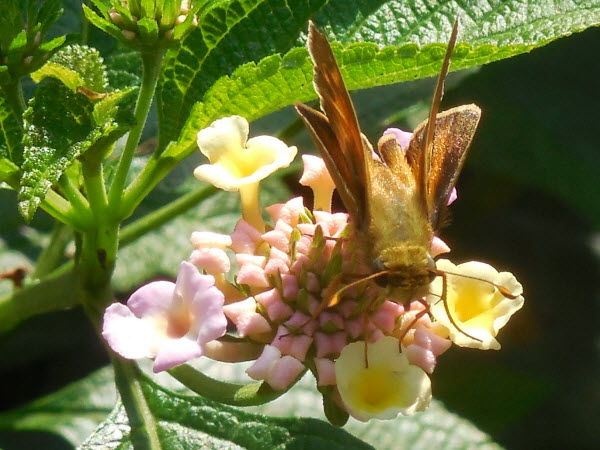
Spider Web
spider webs can be so carefully constructed. I took these early in the morning - sun was up but barely visible through the fog. From where I sat these webs were not visible except through binoculars - it is a marshy area and I was back a bit, and the light did not make them stand out so well. The web looks better at full resolution, of course. These images have been interpolated down about 6-fold.

Not to overlook the spider...
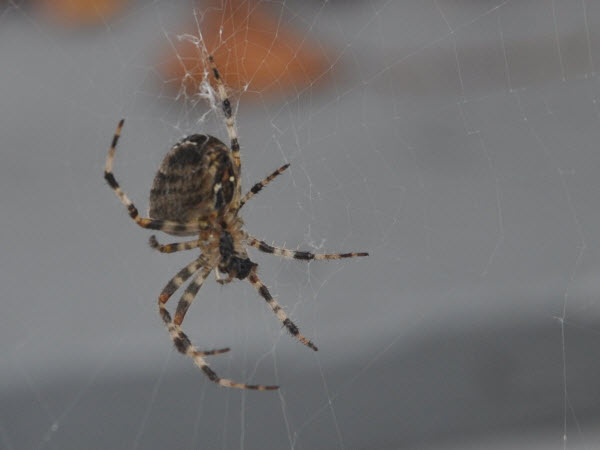


Bees
An extensive bee nest. This picture was taken in the dead of winter. The bark had been removed from a long dead tree, exposing this bee nest.


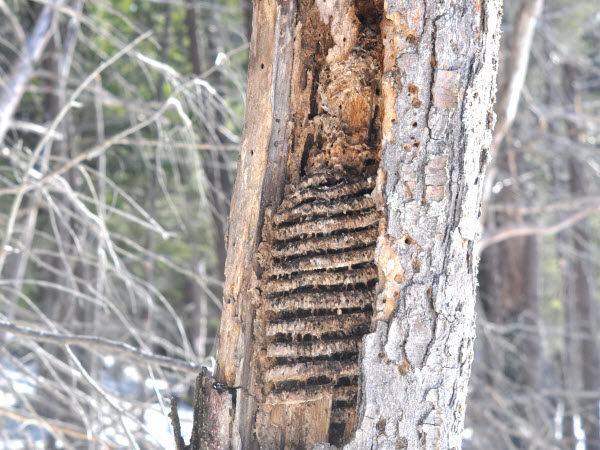
I did not recognize this dark object in the tree as anything more than a bunch of leaves - maybe a squirrel nest - except it is in the wrong place - too far out from the trunk. And so of course I took a picture.
Bryozoan jelly blob
I think this is a Bryozoan jelly blob - there is a great deal of information available from a simple internet search, "bryozoan pond", though I have not seen photos that look quite like this one. This was taken following a lot of spring rain (April 12, 2014), during which the level of this beaver dammed pond had risen, and then gradually fallen. The jelly blob is on a branch that had been submerged and is now a few inches above the water, and its reflection in the water below - only one instance of the blob!

This picture is a dragon fly hovering over a water garden - a purely opportunistic picture! I was working on a picture of a frog that was sitting on an interesting rock, and this dragonfly kept hovering right beside me. Naturally I turned my attention. The difficult part was getting the camera to focus on the dragonfly and to capture the picture before the dragonfly darted off.
